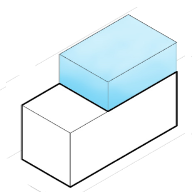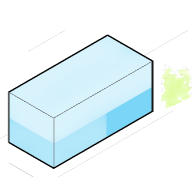Development Opportunity for
118 Mary Teresa St, San Francisco, CA
158% Potential
($4,692,925 Untapped Value)
This property is a Condominium with 4 units owned by different owners. There are 2 buildings on a lot of approx. 3,537 sqft.
Units on this lot:
116 Mary Teresa St
118 Mary Teresa St
124 Mary Teresa St
128 Mary Teresa St
Development Options for
118 Mary Teresa St, San Francisco, CA
What are the local zoning regulations for 118 Mary Teresa St ?
NC-S (NEIGHBORHOOD COMMERCIAL, SHOPPING CENTER)
NC-S Districts are intended to serve as small shopping centers or supermarket sites which provide retail goods and services for primarily car-oriented shoppers. They commonly contain at least one anchor store or supermarket, and some districts also have small medical office buildings. The range of services offered at their retail outlets usually is intended to serve the immediate and nearby neighborhoods. These districts encompass some of the most recent (post-1945) retail development in San Francisco's neighborhoods and serve as an alternative to the linear shopping street.
NC-S Districts are intended to serve as small shopping centers or supermarket sites which provide retail goods and services for primarily car-oriented shoppers. They commonly contain at least one anchor store or supermarket, and some districts also have small medical office buildings. The range of services offered at their retail outlets usually is intended to serve the immediate and nearby neighborhoods.
Permitted Residential Uses: ADU, single room occupancy, student housing, residential uses, dwelling units, senior housing, and group housing and homeless shelters.
Permitted Non-Residential Uses: walk-up facility, agriculture (neighborhood), arts activities, general entertainment, movie theater, child care facility, community facility, public facilities, residential care facility, social service or philanthropic facility, restaurant, restaurant (limited), limited financial services, retail professional services and trade office.
What is the maximum height for 118 Mary Teresa St ?
40-X
No portion of a dwelling can exceed a height of 40 feet, except that the permitted height has to be reduced to 35 feet where the average ground elevation at the rear line of the lot is lower by 20 or more feet than at the front line. The height is measured by taking a point at the centerline of the building or, where the building steps in relation to a street that is the basis for height measurement. Separate points need to be taken at the centerline of each building step. The upper point is the highest point on the finished roof in the case of a flat roof, and the average height of the rise in the case of a pitched or stepped roof.
What are the ADU regulations for 118 Mary Teresa St ?
ADU eligible
Accessory Dwelling Units (ADUs), also called secondary units, in-law units, or cottages, are units added to existing and new residential buildings. Adding an ADU to your property can provide several benefits, such as providing housing for family members, simplifying your lifestyle, and increased financial flexibility.Learn more about building ADU in this article
What neighborhood is 118 Mary Teresa St located in?
Little Hollywood, San Francisco
Little Hollywood is a small neighborhood in the southeastern edge of San Francisco. It is centered around Blanken Avenue between Bayshore Boulevard and U.S. Route 101.
The area was developed by the Crocker Estate Company in the early 1920s in what was then called the "Bayshore Tract" — "'where land and water meet,' a reference to nearby Candlestick Cove."
The name is derived from the architectural style of the first houses built in the neighborhood back in the late 1920s and early 1930s, many of them resembling homes in the Hollywood Hills.




